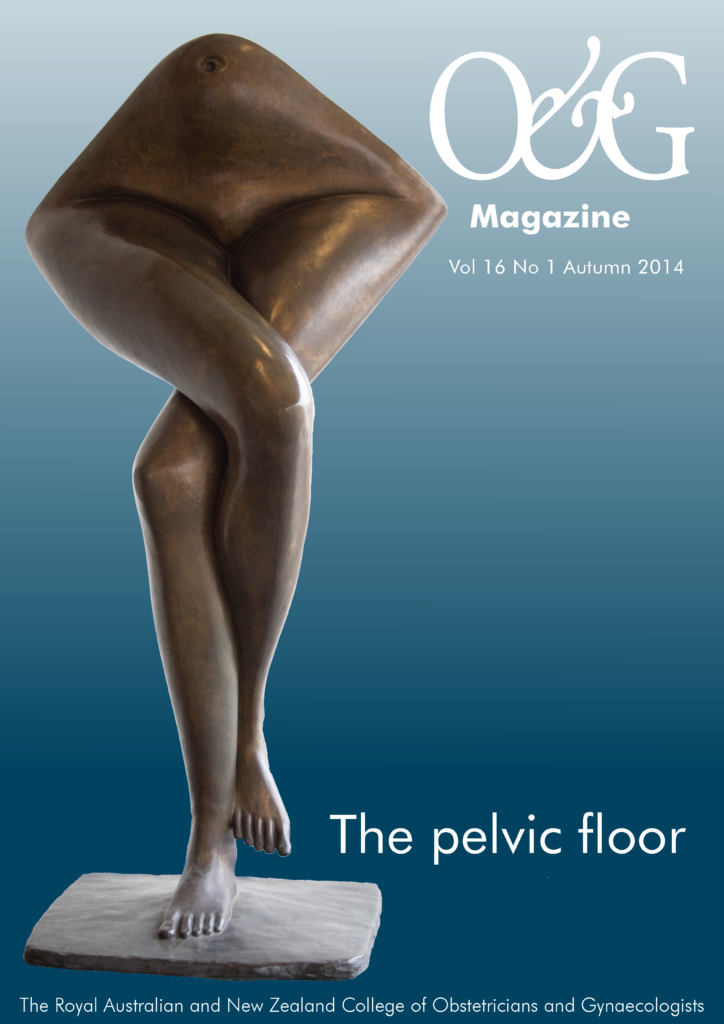The trials and tribulations of organising a perineal repair workshop for the North Queensland Obstetrics and Gynaecology meeting.
Over a glass of Sauvignon Blanc, back in 2012, the decision was made to resurrect the North Queensland Obstetrics and Gynaecology meeting. This conference started as an educational and social forum to bring together the O and G community of North Queensland. Unfortunately, over time the conference had faded away and, during the bonhomie that evening, we nominated ourselves to set about re-establishing it.
As the conference was to be held over a three-day long weekend, we allocated the final day as a perineal trauma repair workshop. Conference delegates included Fellows and Trainees, as well as practising GP obstetricians and DRANZCOG candidates. We felt all of these delegates could benefit from an update on perineal injury and, particularly, anal sphincter repair, the latter being a vital skill in order to try and prevent long-term faecal incontinence issues following obstetric perineal trauma. We also felt some of our delegates, primarily owing to distance and lack of locum access, may have found it extremely difficult to attend similar workshops at larger conferences further afield.
Several issues had to be addressed during the organisation of the workshop. The day was divided into two sessions. The morning session was dedicated to lectures on perineal and anal sphincter anatomy; the role of physiotherapy following perineal trauma; description of, and supporting evidence for, the different techniques of anal sphincter repair; and case discussions with the expert panel. We were extremely fortunate to have urogynaecologist Dr Peta Higgs, colorectal surgeon Dr Richard Turner and continence nurse specialist Karen Boundy to present in the morning session and to act as facilitators in the afternoon session.
The afternoon session was a hands-on practical session repairing porcine anal sphincters and was logistically more complicated. A venue was needed that could accommodate work on biological tissue. Although a couple of the private laboratories in Cairns were willing to assist, their laboratory facilities proved to be too small for the 15–20 delegates that we envisaged would attend the workshop or they were unable to find staff members willing to work on the public holiday to supervise the laboratory. The James Cook University Department at the Cairns Hospital very kindly agreed to allow us to use one of their conference rooms for the workshop.
Appropriate waste disposal was a serious consideration, owing to the biological nature of the tissues used. A contaminated waste bin and sharps containers were provided by the waste disposal unit at the hospital and were removed by the unit’s staff at the end of the day. The hospital infection control unit was consulted and appropriate antiseptic handwash was provided. Johnson & Johnson kindly supplied all the disposable instruments and suture material for the workshop. Cork boards, pins and plastic tablecloths were sourced from a local hardware store and Cairns Hospital theatre provided disposable gloves and aprons.
As Sam’s brother-in-law conveniently owns a piggery, sourcing the anal sphincters was done with minimal fuss and cost. As there was no appropriate refrigeration available near the conference room, the sphincters were delivered to Carol’s house and stored in her husband’s beer fridge. This was done without the prior consent of Carol’s husband and caused some brief marital discord. Apparently, beer does not taste the same if removed from a fridge, allowed to warm up, then cooled down again.
Unfortunately, we had not been as specific as we should have been regarding the length of each piece of intestinal tissue required. As a result, at 7am on the morning of the workshop, a public holiday, we were standing on Carol’s back lawn, scissors and hose in hand, merrily trimming intestinal tissue and washing off any residual porcine faecal matter. Carol’s husband’s large fishing esky was then temporarily appropriated (also without his prior consent) for the transportation of the sphincters to the Cairns Hospital.
We realised on our arrival at the hospital that the distance from the carpark to the conference room was quite significant, given we were also lugging a fully loaded, heavy fishing esky. Not game to call in manly assistance from our husbands (both of whom had been on full childcare duties over the weekend and one of whom was yet to realise that his beer was warm and his fishing esky missing), we struggled along the street to the amusement of passing joggers and cyclists, none of whom volunteered to assist us in our endeavours.
All this effort, however, proved to be worthwhile. The practical workshop went very smoothly. Attendees consisted primarily of GP obstetricians and O and G registrars. Feedback from the event was very positive, with 91 per cent of participants agreeing their learning objectives had been met and 100 per cent stating they would recommend the workshop to colleagues.
Our suggestions to anyone considering running their own perineal trauma workshop:
- ensure you have good facilitators who are able to explain the relevant anatomy and best repair techniques;
- be specific regarding your exact requirements for tissue samples;
- be aware of the need for a venue that can accommodate biological specimens, with enough room for people to work comfortably;
- ensure appropriate waste management and sharps removal;
- arrange appropriate storage facilities for the tissue;
- be aware that anal sphincters en masse weigh more than you would think; and
- obtain formal feedback so that you know how to do it better the next time around.
The 23rd National Conference on Incontinence (a joint meeting of the Continence Foundation of Australia, International Children’s Continence Society and the Urogynaecological Society of Australasia) will be held in Cairns from 10–13 September 2014, at which a perineal trauma workshop will be run. Cairns in September is a lovely place to visit, and the conference should be well worth the journey!







Leave a Reply